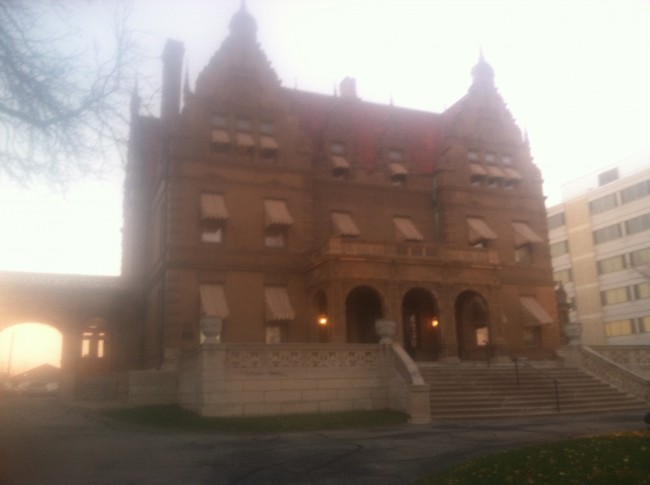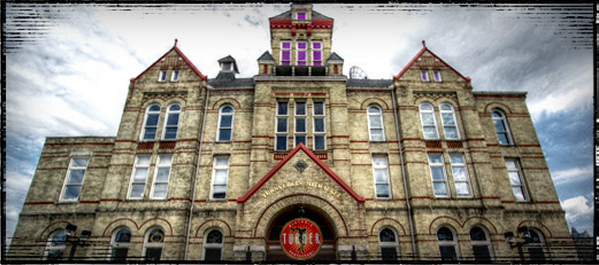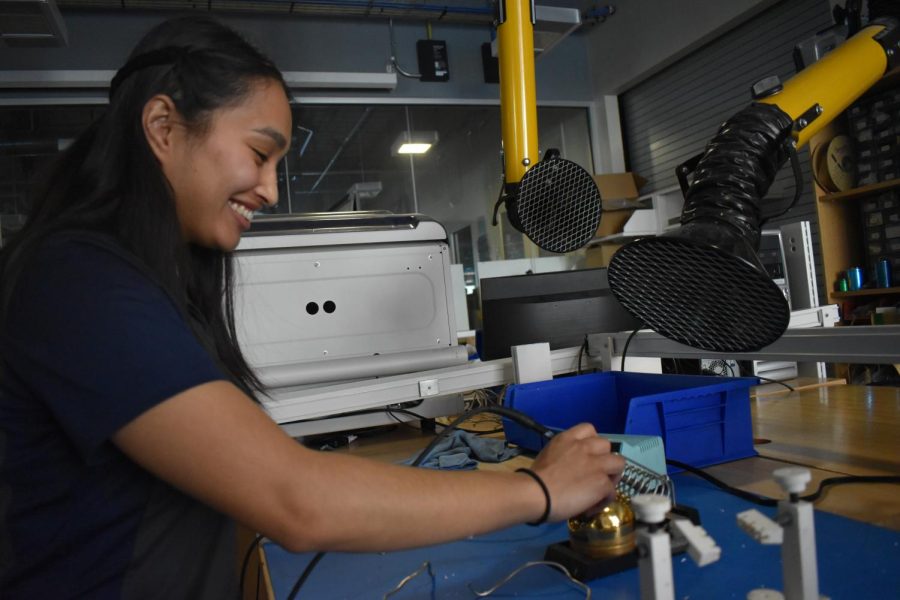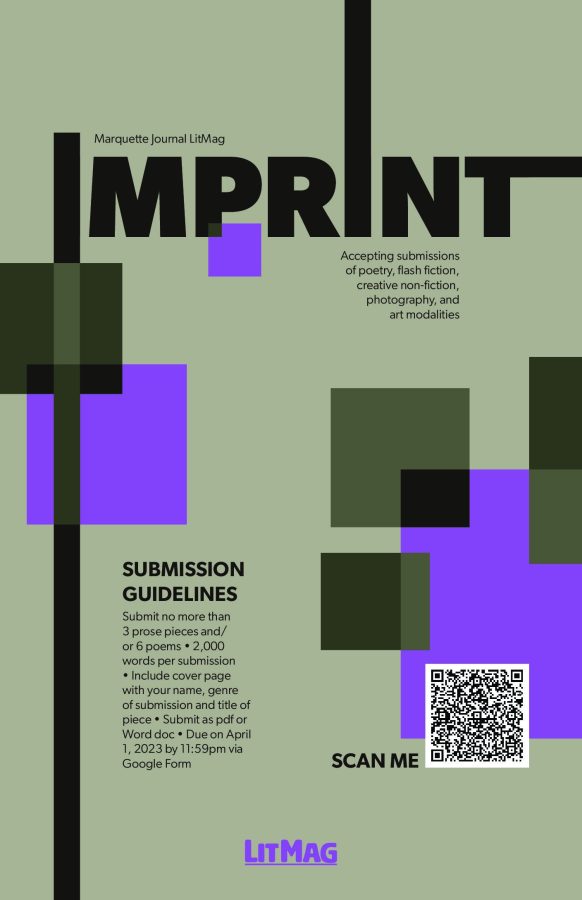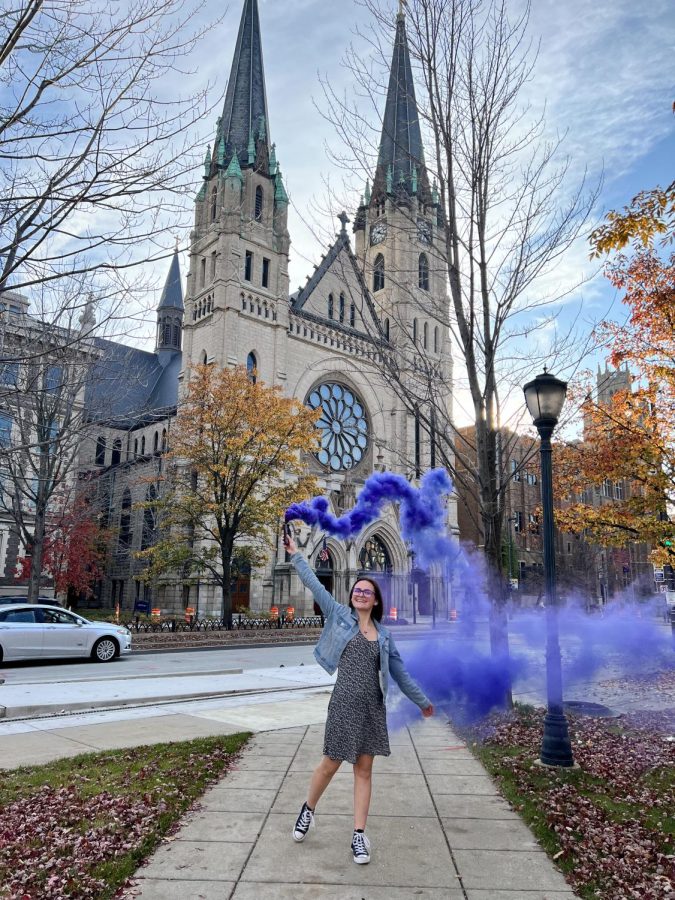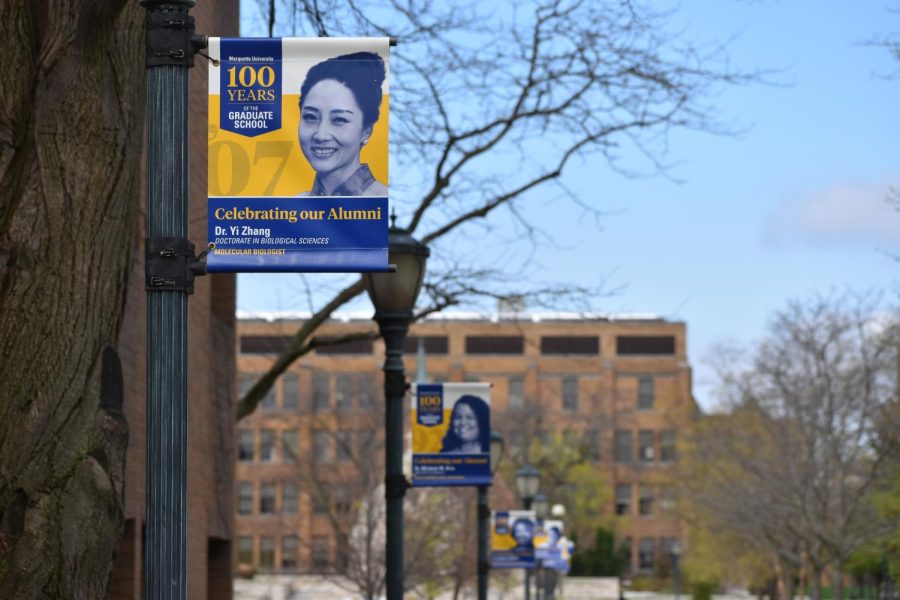The building that quietly exists, visible when walking toward the 2040s or looking out the western windows of Mashuda Hall, is the Pabst Mansion. I got sick of walking past a Wisconsin State landmark, noticing the Christmas lights outside the building every day from my dorm last year and raising a glass to a building I had never been to so I decided to learn what made the mansion so special.
The mansion
The tour began with an explanation of the side building that the tour started in. The guide explained that the building was first introduced in the 1893 Chicago World’s Fair as a beer storage facility. It was then reassembled in 1897 along with the home. The guide then explained that the Fredrick Pabst only lived in the home for 10 years. It was actually only meant as a retirement home for the family and then to be split up for the children after Fredrick and his wife passed.
The tour then took us onto the front entranceway and into the abode. Unfortunately I could not document the rest of my tour as the staff did not allow me to take pictures of the inside of the mansion. However, I will try my best to describe the layout of the home and the feelings experienced.
The entrance way took our group into the living room and gathering area for guests at the time. Right away, the smells reminded me of being in a forest and a church (the Archdiocese of Milwaukee owned it until the 1970s) when I was a kid. The numerous types of cherry and oak wood utilized throughout the home along with a quiet smell close to incense immediately gave the home a character of its own.
Other features from the inside of the home included the study where Pabst smoked and talked business. This room featured his favorite proverbs on the ceiling in German on the topics of learning, striving, honoring and waiting, along with a foot-long ivory pipe. The three-floor home also featured an in-home elevator shaft to bring luggage from the first floor up to other floors when necessary.
The man
The story of Fredrick Pabst is what really made the trip for me. Johann Gottlieb Fredrick Pabst was born March 28, 1836 in Prussia. The guide was unable to explain why he came to America, but did say he arrived in 1848. The next year, his mother died of cholera, and he was left alone with his father to work as busboys. However, his true passion was for the sea, so he quit his job and became a cabin boy on Lake Michigan. He soon earned his captain’s license and eventually bought a ship of his own. Through this interest, he eventually met Phillip Best, an owner of a small Milwaukee brewery and eventually married his daughter, Maria. Fredrick was offered the opportunity to work in the brewery, but declined because he wanted to captain. About a year and a half later, he decided to accept Best’s offer as a shipping accident nearly killed him (his ship ran aground). He eventually expanded the company’s output, and became its president in 1873. In homage to Best, Fredrick Pabst decided to make his beer labels read, “Pabst beer, the Best beer.” As for the blue ribbon, he put ribbons on his bottles so that they would stand out from the rest, even though they never won awards.
His character was shown in the letter to his children given out to people on the tour. The letter was written about five years before his death. He had lung problems from his smoking, so it’s easy to presume that he know his death was imminent, so he wanted to get his goodbyes out of the way. The letter explains to his children that they do best to represent their name and that they take care of their mother in the event of his passing. The last paragraph even mentions they “promote each others happiness and welfare through life.”
The takeaway
I came into the trip half-expecting a half-hour lecture on architecture and brewing techniques, a few Instagrams and a potential realization that my $8 entrance fee could have been spent on his beverage rather than his retirement home. While there was a I came out disappointed in myself that I even allowed the other cynical opinions to creep into the back of my mind. While Fredrick Pabst may be most remembered for a case of his special brew, he should equally be remembered as a humble man who followed his dreams and represented Milwaukee with the character that Midwesterners pride ourselves in. Whether you were the wealthiest man in the state or a simple beggar on Wisconsin Avenue, Fredrick Pabst always treated you as if you were important. The main takeaway for me was a German proverb on the ceiling of his study. It read in German, “Niemals habe ich etwas mehr unbezahlbar als einer ruhigen und wahren Herz gefunden.” It translates to, “Never have I found anything more priceless than a quiet and true heart.” Fredrick Pabst lived a life that was representative of this simple proverb.

